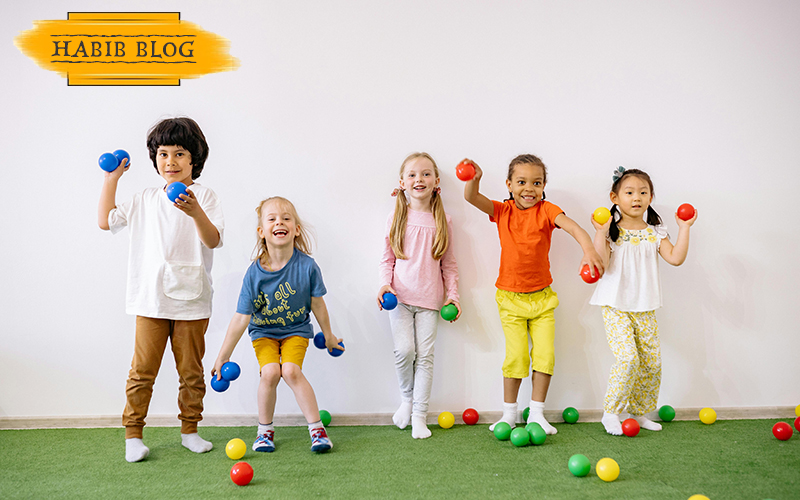Introduction
Welcome to the ultimate guide to kid game articles! Whether you’re a parent, teacher, or caregiver, finding engaging and educational activities for children can sometimes feel like a daunting task. But fear not! In this article, we’ve curated a diverse range of kid games that are sure to captivate and inspire young minds. From timeless classics to innovative new trends, there’s something here for every child to enjoy. So let’s dive in and unleash the fun!

1 The Benefits of Kid Games
1.1 Cognitive Development
Engaging in kid games stimulates cognitive abilities such as memory, attention, and logical reasoning. Games like puzzles and memory matching require children to use their brains actively, enhancing cognitive functioning.
1.2 Social Skills
Many kid games involve interaction with peers, promoting essential social skills like communication, teamwork, and conflict resolution. Board games, for example, provide opportunities for children to take turns, follow rules, and practice good sportsmanship.
1.3 Emotional Well-being
Playing kid games can boost children’s self-esteem and confidence as they master new challenges and achieve goals. Additionally, games offer a safe outlet for expressing emotions and coping with stress, promoting emotional resilience.
2 Exploring Kid Game Categories
Now, let’s explore various categories of kid games, each offering unique opportunities for entertainment and learning:
2.1 Classic Board Games
Take a trip down memory lane with timeless classics like Monopoly, Scrabble, and Candy Land. These iconic board games provide hours of family fun while teaching valuable skills such as counting, spelling, and strategic thinking.
2.2 Outdoor Adventures
Get kids moving and exploring the great outdoors with a range of outdoor games and activities. From tag and hide-and-seek to scavenger hunts and nature walks, there’s no shortage of ways to enjoy fresh air and physical exercise.
2.3 Creative Arts and Crafts
Encourage artistic expression and creativity with hands-on arts and crafts projects. Whether it’s painting, sculpting, or DIY crafts, children can unleash their imagination and produce one-of-a-kind masterpieces.
2.4 Educational Apps and Games
In today’s digital age, educational apps and games offer a convenient way to supplement traditional learning. With a plethora of options available, parents can find age-appropriate apps that reinforce academic skills in a fun and engaging way.
2.5 Kids Exercise
Physical activity is essential for children’s overall health and well-being. Regular exercise not only strengthens muscles and bones but also promotes cardiovascular health, improves mood, and enhances cognitive function. In our sedentary society, encouraging kids to stay active is crucial for combating childhood obesity and fostering lifelong habits of fitness and wellness.
3 The Benefits of Kids Exercise
3.1 Enhanced Physical Health
Engaging in regular exercise helps children develop strong muscles and bones, improve coordination and balance, and maintain a healthy weight. Physical activity also reduces the risk of chronic conditions such as obesity, diabetes, and heart disease.
3.2 Improved Mental Well-being
Exercise has been shown to have numerous mental health benefits for children, including reduced stress and anxiety, improved mood and self-esteem, and better concentration and academic performance. Physical activity stimulates the release of endorphins, the body’s natural feel-good chemicals, leading to a happier and more positive outlook.
3.3 Social Development
Many forms of exercise involve interaction with peers, promoting social skills such as cooperation, teamwork, and communication. Whether playing team sports or participating in group fitness classes, children learn valuable lessons in cooperation and sportsmanship through physical activity.
4 Exploring Different Types of Kids Exercise
Now, let’s explore various types of exercise suitable for children of all ages and fitness levels:
4.1 Outdoor Activities
Encourage kids to explore the great outdoors and enjoy activities such as biking, hiking, swimming, and playing sports like soccer, basketball, and tennis. Outdoor exercise provides fresh air, sunshine, and opportunities for unstructured play, fostering creativity and imagination.
4.2 Indoor Workouts
On rainy or cold days, indoor workouts offer a convenient alternative to outdoor play. Set up a mini obstacle course, have a dance party, or try yoga or Pilates for a fun and active indoor exercise session. There are plenty of online resources and apps available with kid-friendly workout videos and routines.
4.3 Active Games
Turn everyday activities into opportunities for movement and exercise. Games like tag, hide-and-seek, and Simon says get kids moving and provide hours of entertainment. Consider investing in active gaming systems like Wii Fit or Nintendo Switch to combine technology with physical activity.
4.4 Family Fitness Challenges
Make exercise a family affair by organizing fitness challenges and activities that involve the whole family. Whether it’s a weekend hike, a bike ride around the neighborhood, or a friendly competition to see who can do the most push-ups, family fitness challenges promote bonding and healthy habits.
